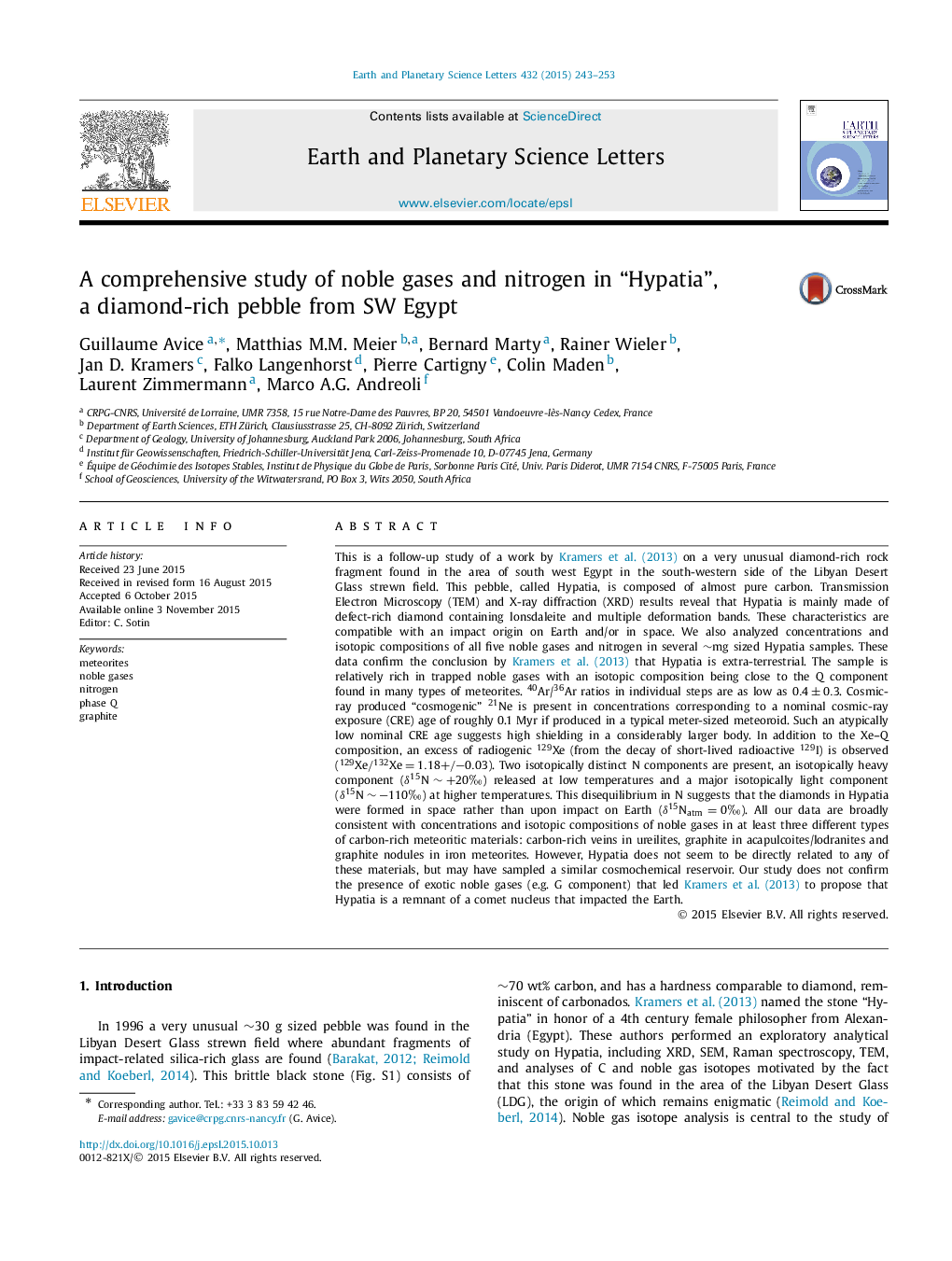| کد مقاله | کد نشریه | سال انتشار | مقاله انگلیسی | نسخه تمام متن |
|---|---|---|---|---|
| 6427841 | 1634724 | 2015 | 11 صفحه PDF | دانلود رایگان |

- Hypatia is an unusual stone found in Egypt and rich in diamonds.
- Noble gases and nitrogen confirm its extra-terrestrial origin.
- Some similarities are found with carbon-rich extra-terrestrial materials.
- Its combined features are unique among known extra-terrestrial materials.
This is a follow-up study of a work by Kramers et al. (2013) on a very unusual diamond-rich rock fragment found in the area of south west Egypt in the south-western side of the Libyan Desert Glass strewn field. This pebble, called Hypatia, is composed of almost pure carbon. Transmission Electron Microscopy (TEM) and X-ray diffraction (XRD) results reveal that Hypatia is mainly made of defect-rich diamond containing lonsdaleite and multiple deformation bands. These characteristics are compatible with an impact origin on Earth and/or in space. We also analyzed concentrations and isotopic compositions of all five noble gases and nitrogen in several â¼mg sized Hypatia samples. These data confirm the conclusion by Kramers et al. (2013) that Hypatia is extra-terrestrial. The sample is relatively rich in trapped noble gases with an isotopic composition being close to the Q component found in many types of meteorites. 40Ar/36Ar ratios in individual steps are as low as 0.4±0.3. Cosmic-ray produced “cosmogenic” 21Ne is present in concentrations corresponding to a nominal cosmic-ray exposure (CRE) age of roughly 0.1 Myr if produced in a typical meter-sized meteoroid. Such an atypically low nominal CRE age suggests high shielding in a considerably larger body. In addition to the Xe-Q composition, an excess of radiogenic 129Xe (from the decay of short-lived radioactive 129I) is observed (Xe129/Xe132=1.18+/â0.03). Two isotopically distinct N components are present, an isotopically heavy component (δN15â¼+20â°) released at low temperatures and a major isotopically light component (δN15â¼â110â°) at higher temperatures. This disequilibrium in N suggests that the diamonds in Hypatia were formed in space rather than upon impact on Earth (δNatm15=0â°). All our data are broadly consistent with concentrations and isotopic compositions of noble gases in at least three different types of carbon-rich meteoritic materials: carbon-rich veins in ureilites, graphite in acapulcoites/lodranites and graphite nodules in iron meteorites. However, Hypatia does not seem to be directly related to any of these materials, but may have sampled a similar cosmochemical reservoir. Our study does not confirm the presence of exotic noble gases (e.g. G component) that led Kramers et al. (2013) to propose that Hypatia is a remnant of a comet nucleus that impacted the Earth.
Journal: Earth and Planetary Science Letters - Volume 432, 15 December 2015, Pages 243-253